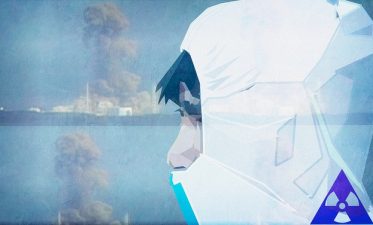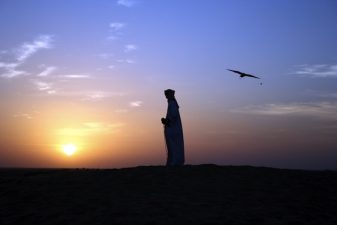Iran’s aggressive nuclear energy program seems to be constantly in the news these days; while other regional countries, including Jordan, have nuclear power ambitions of their own. As the fourth anniversary of the March 11, 2011 Fukushima nuclear reactor meltdown is commemorated by Japan last week, the world may still not have learned the entire lesson of that tragic event. Many environmental activists are referring to the Fukushima reactor meltdown as much worse than Chernobyl.
Fukushima is now considered the world’s worst nuclear power plant disaster, and at least 250,000 Japanese are still displaced from their homes and businesses by the effects of both the giant earthquake-caused tsunami and nuclear reactor meltdown that killed more than 16,000 people and resulted in 2,500 more still missing.
Extremely high levels of radiation in locations near the destroyed Fukushima facility have prevented many Japanese from returning to their former homes; possibly forever. Entire communities are now no more than ghost towns, where wild animals like wild boars and monkeys roam free.
Not only the Japanese were affected, but also foreign rescue personnel who were sent there to aid and rescue the victims of this double tsunami and nuclear meltdown tragedy. This includes more than 500 American naval personnel who became ill from a variety of diseases and medical conditions which may have been caused by over-exposure to nuclear radiation.
Statistical information on radiation caused diseases, like cancer, and birth defects caused by the exposure of the Japanese population to high amounts of radiation have not yet been revealed as well.
Despite being the only country whose civilian population has experienced the effects of nuclear weapons first hand, Japan still depends on nuclear energy to supply much of its total electricity needs. The Fukushima tragedy may have changed this, however, with government officials now looking for other means to supply the country’s energy needs.
Statistically, the facts and figures of the need for nuclear reactors, are evident. Japan still has 48 nuclear reactors in operation, generating more than 42,500 MW of electricity. France, Europe’s largest nuclear reactor user, has 58 in operation, generating more then 63,000 MW. With 99, the USA has the largest number of nuclear reactors in operation, generating more than 98,700 MW of electricity.
The Middle East is still depending largely on oil and natural gas to supply its energy needs. At present only Iran has a functional nuclear reactor, producing around 915 MW of electricity. Seven more reactors are planned however. Other Middle Eastern countries planning to construct nuclear power reactors include Jordan with 2, Egypt with 2, Saudi Arabia with 16 and the UAE with 10 (3 are under construction).
These figures do not include “scientific reactors” in countries like Iran and Israel. With the tragic memories of the Fukushima reactor meltdowns still relatively fresh on peoples minds, we might all ask ourselves if the potential dangers of these power sources are really worthwhile?
Read more on Fukushima nuclear reactor meltdowns and the effect of nuclear energy on world environment:
Plans for Turkey’s First Nuclear Power Plant Revealed
Dr. Helen Caldicott: Fukushima nuclear meltdown much worse than Chernobyl
“Worst Case Scenario” Realized as Three Fukushima Nuclear Reactors Melt Down





FROM: Rev. Robert Cote’
TO: YOU, not someone else, YOU!
RE: Fukushima Deadly Nuclear Disaster Problem is Solvable.
RE: An immediate simple action is required from you.
Officials Admit that
They Have No Way to Solve
the Deadly Fukushima Nuclear Disaster
Rev. Robert Cote’ claims that he knows
what is required in order to solve the
Fukushima nuclear disaster problem.
Skeptics Are Amazed.
Officials Ignore Him.
Let’s find out whose right.
Because the problem
is far more deadly
than we are being told,
you need to hear the truth.
For the evidence, go to:
http://www.ThePeacefulRevolution.com/i-fukushima.html#57
This is an Urgent Health/Safety Issue.
Folly is the fool
who follows his own advice.
The fool discounts the truth
without examining the evidence.
This article needs some serious fact checking.
Japan has ZERO energy produced from nuclear power because ALL of their nuclear plants have been shut down for the past 3 years. Thsi has caused significant economic damage as they have had to import huge quantities of oil, natural gas and coal to replace the electricity generated by nuclear power.
Many of the 250,000 displaced persons were displaced by the tsunami and not the nuclear accident. And many of them voluntarily left, they could have stayed but chose not to. Just as some areas have been opened for return yet many of the displaced people have voluntarily decided not to return.
And lastly, although some data may not have been released, large amounts of information on cancer and disease in those affected by the nuclear accident has been released.
Yes, an earthquake which likely killed dozens and damaged many buildings.
Yes, a tsunami which killed thousands and likely washed many bodies out to sea – besides greatly damaging whole towns and the infrastructure linking them together.
Then there’s the damage to 3 nuclear power plants. Onagawa was closest, properly prepared, and became an emergency shelter to hundreds of tsunami victims. To the south, Da-Ini sustained damage but had one electric line remaining to power it’s reactor pumps. In between was under prepared Da-Ichi, with an industrial incident which will rightly cost Tepco dearly for the damages to 4 reactor sites. The situation was made much worse by the direct mismanagement of PM Kan. If Kan and his staff hadn’t tried to micro-manage the nuclear plants, they likely would have saved each reactor and containment building. Yet in spite of all the drama, no one has been injured or killed because of radiation or planned emergency responses at those sites. Nuclear is much safer & more robust than any other form of electrical generation.
There have been over 100 deaths due to the needless fear and extreme evacuations caused by the political reaction to the power plant incidents. That blame goes equally to local & national govt officials, and Tepco too. Why is it that 50+ families that refused to leave are still healthy, other than having a difficult time getting groceries? http://www.hiroshimasyndrome.com/fukushima-four-years-after.html
http://www.liveleak.com/view?i=abb_1426226399